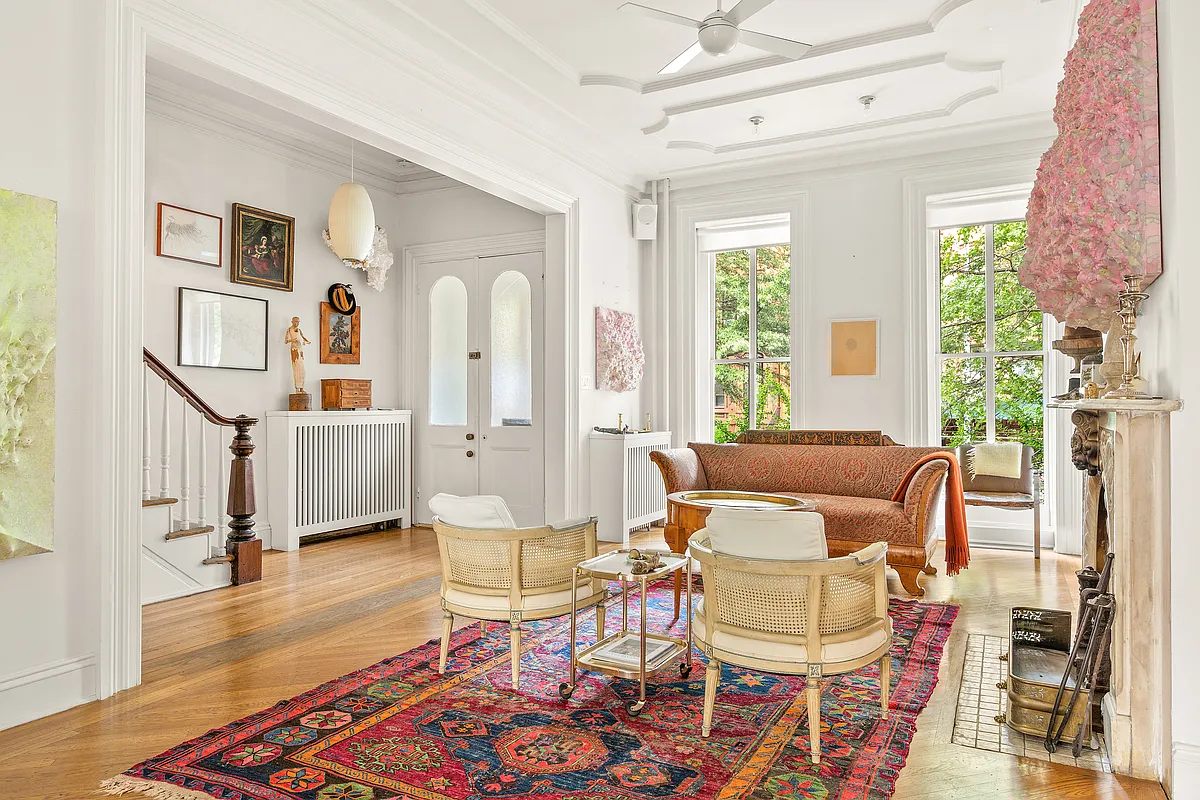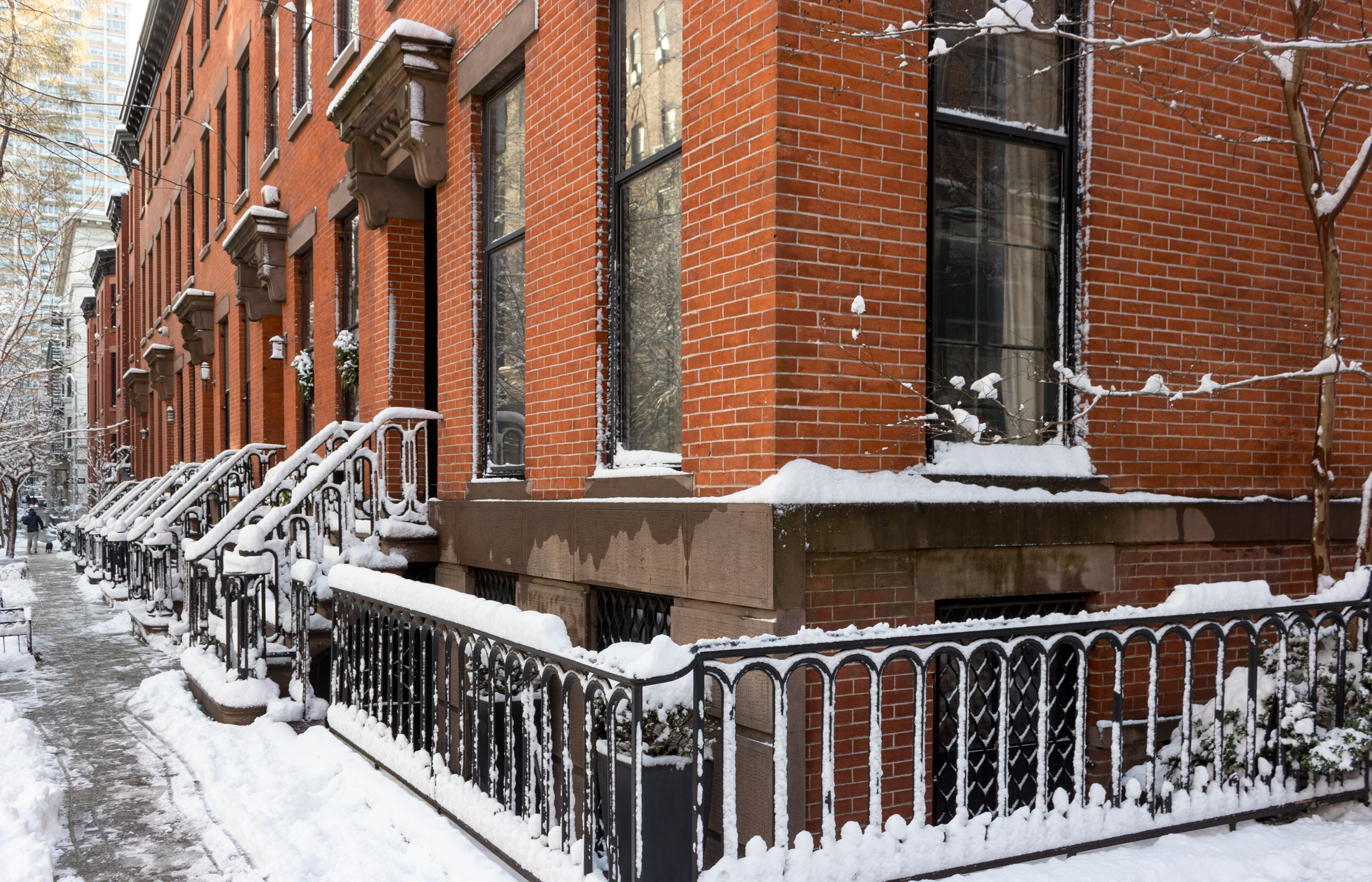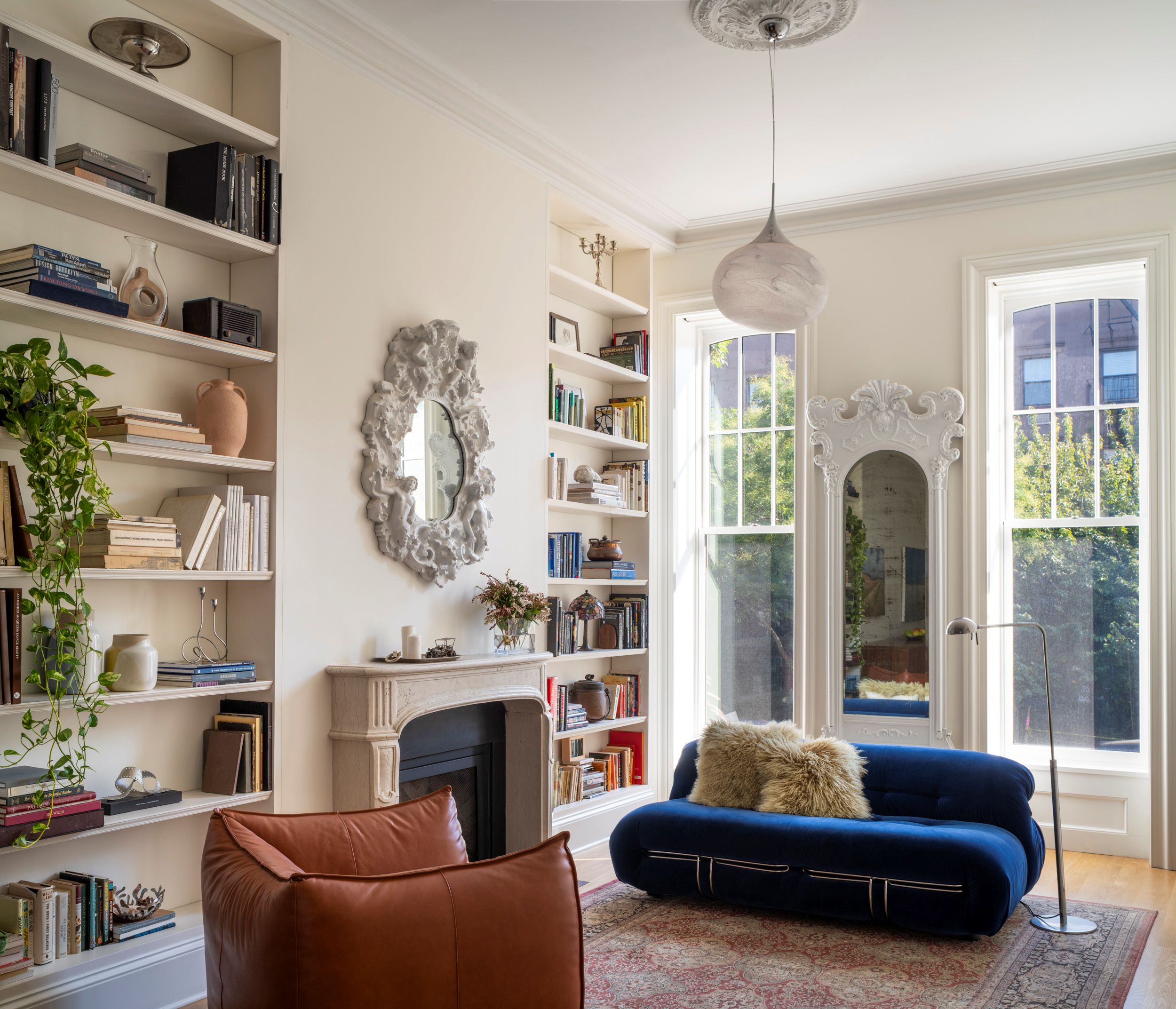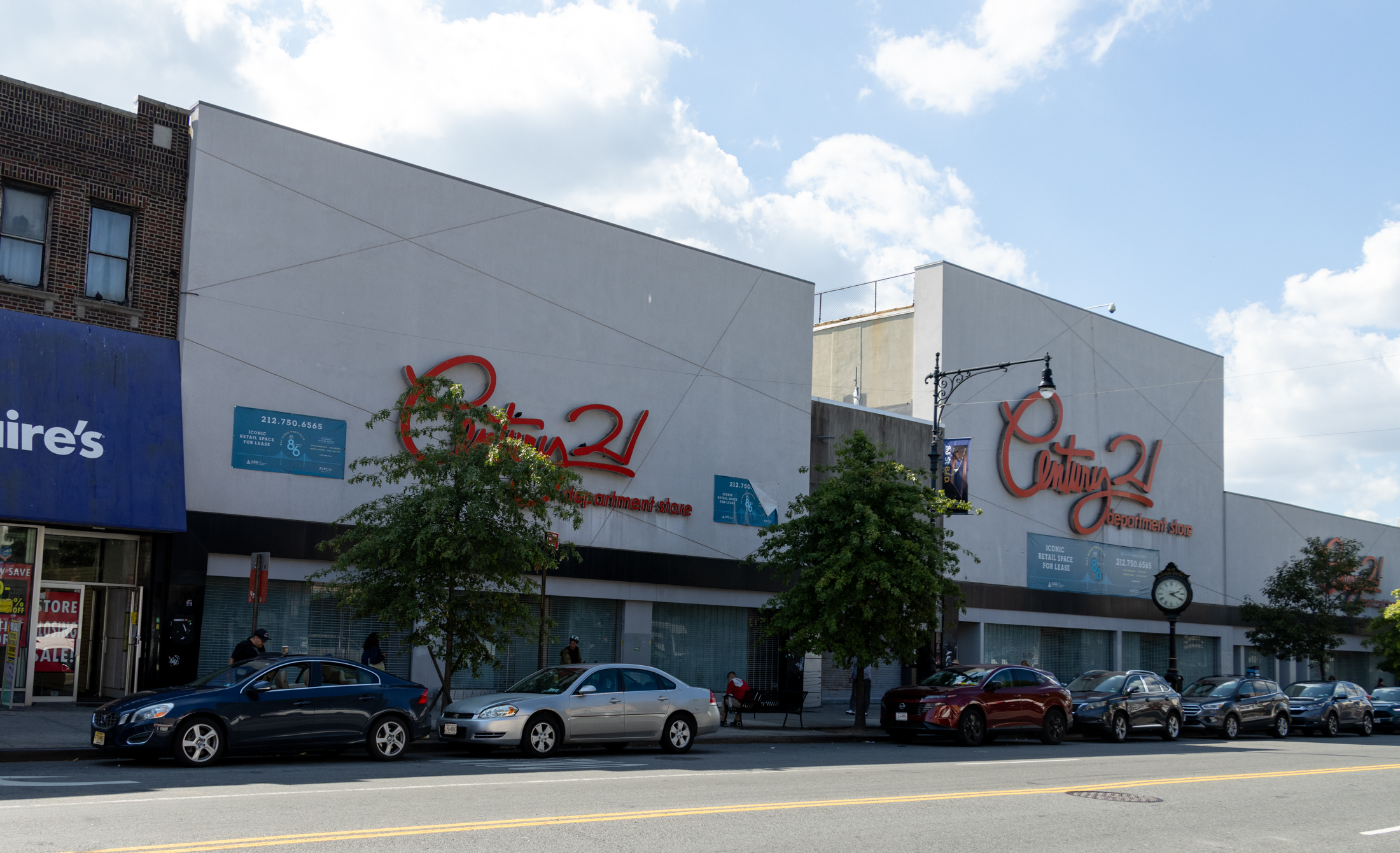CB6 Land Use Approves Berkeley Carroll Expansion Plans
A controversial expansion plan for the Berkeley Carroll School won support from the Community Board 6’s land use committee yesterday despite widespread opposition from Park Slope neighbors, reports The Brooklyn Paper. The plan for a one-story building with a rooftop recreation area had drawn criticism from residents of both St. Johns Place and Lincoln Place…


A controversial expansion plan for the Berkeley Carroll School won support from the Community Board 6’s land use committee yesterday despite widespread opposition from Park Slope neighbors, reports The Brooklyn Paper. The plan for a one-story building with a rooftop recreation area had drawn criticism from residents of both St. Johns Place and Lincoln Place worried about noise and other quality of life issues. We’ve lived with the noise from the school coming over the wall and permeating our lives, said John Muir, who spoke on behalf of the portion of the St. Johns Block Association that still opposes the project. It is indisputable that the noise of the new rooftop will spread to Seventh Avenue and affect those who live on Lincoln Place. But some neighbors who had fought the proposal early on ultimately came around to accept the plan when it was modified to exclude rooftop air conditioning units that had originally been proposed and to set back the play area by 15 feet. The school seems to have been compliant [with landmarks code], said community board member Betty Lester, who backed the proposal. Let’s agree to disagree. The compromise is there.
Panel Backs Berkeley Carroll Plan [Brooklyn Paper]
Berkeley Carroll Expansion Stirs Up The Neighborhood [Brownstoner]





11217, Berkeley Carroll doesn’t cost 35K a year. 29K perhaps, but not 35K.
Wine lover,
Berkeley Carroll is a private school so your issue really doesn’t make any sense.
People don’t move to Park Slope to send their kids to Berkeley Carroll at 35K a year…PS. 321 for sure cause it’s free. A lot of the kids at Berkeley Carroll aren’t even from Park Slope…quite a few come from Manhattan, in fact.
I think a lot of people would rather move to a neighborhood which is already nice so that their kids can enjoy it and have a great neighborhood where they feel safe.
Your reasoning about moving to a sketchy hood and waiting for the schools to improve is more out of greed so that the parents can reap a housing windfall. I pity the kids who grow up with parents whose mission is to make money on their home over the quality of life their child will endure growing up.
I also don’t think the folks on Lincoln Place really care much about their property values going up much more. It’s already about as nice as you can get.
ahhh the contradictions of park slope – move there for the schools and find out that there’s no room in them! duh!
trick is to find a hood with a decent school that has room, then watch the hood gentrify, the school gets word of mouth praise, and by the time it’s crowded, yours has graduated and your house is worth is more than double.
anyone moving to a dense hood because of the schools had better think about how much space the school has – it’s so simple. go look at the damn building! read the dept of ed reports. tour the school(s) and see if they have any space left. or, move there and get re-zoned! or, have your kid lost in an overly packed classroom. or, say good-bye to the extras…
pslopers protesting this school are not thinking this thru – it’ll help their property values go up.
Berkeley Carroll School has done little in the way of compromise. The point of the expansion was to decongest their cafeteria; not to increase their recreation area. The rooftop was originally going to include mechanicals and also a rooftop recreation area right on the property line of 8 brownstone; right now it was enclosed within the campus.
The mechanicals were not removed out of a spirit of compromise, but because a new NY Noise Ordinance was enacted that made it illegal to place the mechanicals within 30′ of property lines; so they didn’t have the room to keep them on the new rooftop and placed them inside existing buildings only after the new law.
Given that now they’d have a lot more room, they decided to increase the size of the rooftop recreation area by 30%.
Yes neighbors have had to deal with a recreation area now, but it is smaller and enclosed within the campus; now it will be the width of 7 brownstones and an extra 1,100 sq feet, 23′ up in the air looking into neighboring brownstones for the first time – an invasion of privacy. It wasn’t there when they moved in.
The new building will block the views for the first time of the lower residents of neighboring 209 Lincoln Place.
The 2 households that have embraced the “compromise” currently have the school’s enormous A/C unit which is in violation of the old and new noise codes behind them; so demolition will mean that those will be gone for them; also, they live at the narrowest point of the new L shaped rooftop recreation area furthest from the main source of noise.
For the record, the neighboring brownstones are perfectly preserved and date to 1873; yes Berkeley Carroll Institute For Young Ladies was founded in 1886; but the lot was vastly empty; the lot was not substantially filled in until 1971 and 1996; after many neighbors who are protesting now were already living in the block [since the 1960s]; so the neighbors were in fact in the block first on both counts.
okay, 11217, I get your point. I simply don’t like the look of the addition.
^^ jesus. im like halfway reading 11217’s post thinking lol at this poly prep PTA member prattling on about her school, only to see it’s 11217 hahha
*rob*
While I would agree with you dt about Berkeley Carroll being a fine looking school, I don’t really agree about Lower Poly Prep. They have done terrific things with their campus:
“Poly Prep received the Moses award for the outstanding renovation of—and modern addition to—its Park Slope Lower
School, the first LEEDâ€Certified school building in New York City, and the first LEEDâ€Certified primary school building in New York State. Poly Prep was also the only school to receive a Moses Award this year, and the only awardee that both renovated and added to an existing historic structure.
Built in 1889 for Henry Hulbert and his family, Poly Prep’s grand paired mansions are the last surviving example of the “Romanesque Revival†style designed by Montrose Morris in Park Slope.
Consisting of exuberantly carved white limestone, complete with turrets, grand staircases, and stained glass windows, the Hulbert mansions were used by the Brooklyn Ethical Culture School starting in 1925. Poly Prep acquired the school and buildings for its Lower School (Nursery through 4th Grade) in 1995, augmenting its historic 25â€acre Middle and Upper School campus in Dyker Heights, Brooklyn.
The mansions posed three principal challenges, for both Poly Prep and the architects. First, Poly Prep—founded in 1854 and an historical institution in its own right—wished to preserve the Hulbert mansions and comply with the requirements of the Park Slope Historic District.
Second, Poly Prep sought to demonstrate good environmental citizenship by minimizing the Lower School’s carbon
footprint and modeling sustainable practices for students, faculty, parents, and the Park Slope community.
Third, the project needed to accommodate expanded enrollment and a topâ€flight coâ€curricular program involving athletics, dance, art, and music.
Platt Byard Dovell White’s design admirably meets all three challenges. Upon project completion, Poly Prep’s Lower School has nearly doubled its square footage with additional classrooms, and large indoor athletic, music, and dance spaces. In addition, the modern addition harmonizes beautifully with the Morrisâ€designed mansions and adjacent 19th century brownstones by using materials such as limestone, painted metal, and asymmetrical window bays and openings—all in a restrained palette.
Finally, Poly Prep’s Lower School became New York City’s first school building with LEED Certification (Silver) in New York City and the first LEEDâ€Certified primary school in New York State. LEED Certification involves reducing a building’s carbon footprint and environmental impact.
For example, Poly Prep’s new Lower School has reduced its potable water consumption by 31%, used 22.5% recycled
content in building materials, enjoys “green†landscaping using native plants and other features to minimize its “heatisland†effect, and diverted 308.4 tons of construction waste from landfill.
The school has been there for over one hundred years. It has actually done a nice job of expanding with character and beauty -much more so than the expansion of Lower Poly Prep a block or two over.
As far as the students go, they seem pretty well behaved to me. Any large group of adolescents will be oblivious to their surroundings. They’re wired that way!
Brenda, I commiserate, I also work at home. But honestly, what can people really expect to be done? Kids are noisy creatures by nature, especially in groups. Have you ever heard the audible groan that arises from riders in a subway car when a group of kids is on the platform? We are all mentally willing the car to pass the kids, slower, slower, arghhhh, not far enough, they pour into the train, and the noise level rises like a thermometer in August. I’ve never understood why they have to yell when they could just speak, but I don’t understand kids. Plus, I was one of those weird, quiet, book-reading children.
Anyway, can you imagine the public uproar if the school insisted on the kids playing or congregating quietly? I’m sure there would be parent riots on the school with people brandishing psychological studies showing that quiet kids are malajusted, and won’t become A Type personality movers and shakers, and end up being underpaid creative types. Hey, wait a minute…….